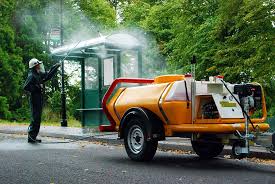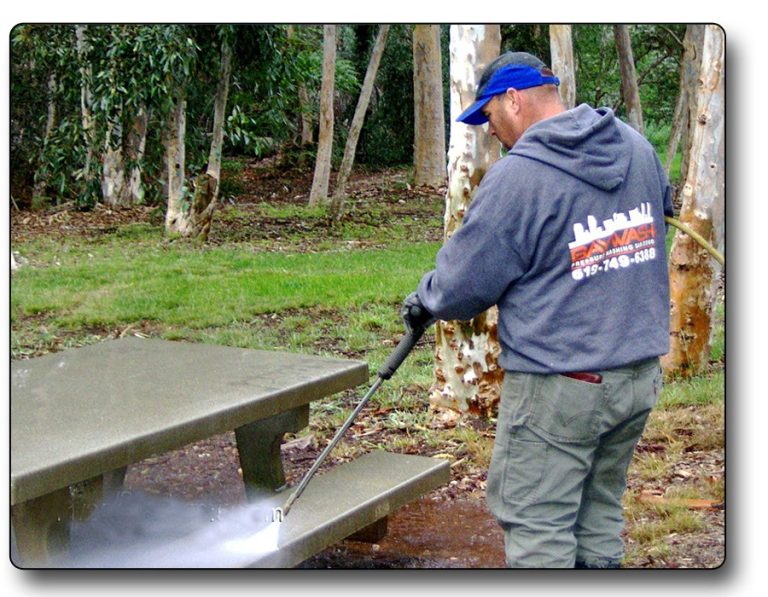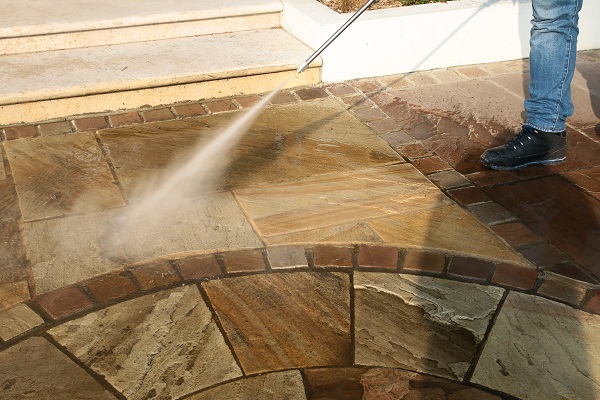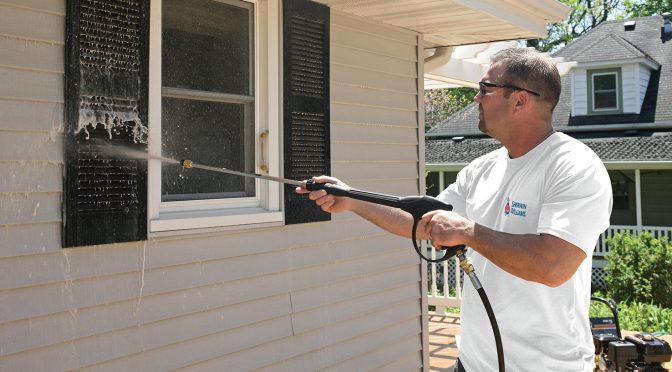
When we think about power washing, our minds often go straight to homes, decks, or sidewalks. But what about the public spaces we all share? Benches at parks, bus stops on street corners, and transit shelters along busy roads are heavily used, frequently overlooked, and often in desperate need of a good clean. 🏙️
Power washing can play a major role in keeping these areas safe, sanitary, and visually appealing for the public. In this article, we’ll explore how municipalities, property managers, and even neighborhood associations can use power washing to maintain these valuable community features. 💦✨
🧽 Why Power Wash Public Benches and Bus Stops?
From spilled drinks to sticky residue, graffiti, bird droppings, and built-up grime, these high-traffic areas collect all sorts of gunk. Cleaning them manually can be time-consuming—and often ineffective.
Here’s what makes power washing a perfect solution:
✅ Removes Built-Up Dirt and Grime
Benches and shelters accumulate layers of pollution, dust, chewing gum, and more. A power washer blasts away years of filth in minutes. 🧼
✅ Sanitizes Surfaces
Bacteria from hands, food, and pests can make public benches unhygienic. Hot water and proper detergents disinfect surfaces effectively. 🦠🔥
✅ Enhances Aesthetic Appeal
Clean benches and shelters look welcoming and well-maintained, which can deter vandalism and loitering. A tidy public space sends a message of pride and care. 🌟
✅ Boosts Community Morale
People are more likely to respect clean environments. Power washing shows residents their city or neighborhood is invested in their quality of life. ❤️🏙️
🛠️ What Can Be Power Washed?
Many components of public sitting and waiting areas can benefit from power washing. These include:
- Wood or metal benches 🪑
- Concrete or brick bases 🧱
- Glass and polycarbonate bus stop walls 🪟
- Shelter roofs ☂️
- Trash bins and nearby fixtures 🗑️
- Signage poles and seating rails 🚏
These surfaces are typically durable and can handle medium to high-pressure cleaning when done correctly. The key is knowing how much pressure to use and what cleaning solutions are safe for the material.
💡 Best Practices for Power Washing Public Spaces
Cleaning public infrastructure requires a thoughtful and professional approach to avoid damage, minimize disruption, and maintain safety.
1. 🕐 Schedule During Low-Traffic Times
Early mornings or weekends are best to avoid disrupting transit riders or pedestrians. Always post temporary signs warning the area is being cleaned.
2. 🌡️ Use the Right Water Temperature
Hot water (over 180°F) works well on gum, oils, and organic buildup, while cold water is suitable for routine surface washing.
3. 🧪 Use Eco-Friendly Detergents
Opt for biodegradable cleaning agents to prevent runoff pollution. This is crucial near storm drains or natural areas. ♻️🌿
4. 🔧 Adjust Pressure Appropriately
- 1,500–2,000 PSI is safe for most metal or composite benches.
- Lower pressure with wider spray angles is ideal for painted surfaces or delicate signage.
5. 🚧 Take Safety Precautions
- Use traffic cones or caution tape to block off the area.
- Wear non-slip boots and protective gear.
- Avoid spraying electrical fixtures or lighting components.
🔄 Maintenance Frequency: How Often Should These Areas Be Cleaned?
The frequency depends on location, traffic, and weather, but here are some general guidelines:
| Location Type | Recommended Frequency |
|---|---|
| 🏞️ Parks & Playgrounds | Every 3–6 months |
| 🚌 Busy Transit Shelters | Monthly to Quarterly |
| 🏙️ Downtown Public Areas | Monthly |
| 🏘️ Suburban Bus Stops | 2–4 times per year |
In high-use urban areas, monthly power washing can keep up with grime and discourage vandalism. In quieter zones, a quarterly or seasonal clean may be enough.
🧼 Before & After: What a Difference!
If you’ve never seen a power-washed bench or bus shelter before and after, the transformation is often night and day. Dirt that once made the area look abandoned can be stripped away to reveal vibrant paint or polished metal underneath. 🌈✨
This kind of visual improvement isn’t just cosmetic—it changes how people feel about the space. And in many cities, perception is everything.
🛑 Common Mistakes to Avoid
Power washing public spaces comes with responsibility. Avoid these missteps:
- Using harsh chemicals that can damage finishes or harm nearby plants 🌱
- Not testing a small area first (especially on painted surfaces)
- Neglecting to rinse thoroughly, leaving streaks or detergent residue
- Over-pressurizing fragile components, like shelter windows or decorative elements
Even though power washing is fast, it’s not a mindless process. A skilled hand is always better than brute force. 🤝
👷 Who Should Handle the Job?
While some local municipalities have their own crews and equipment, many rely on professional power washing services. These experts come with commercial-grade washers, water reclamation systems, and trained technicians.
If you’re a property manager, HOA leader, or city maintenance planner, hiring a reliable power washing company can keep your public spaces consistently clean without tying up your internal resources.
💬 Final Thoughts
Public benches and bus stops are more than functional infrastructure—they’re part of our community’s identity. When they’re clean, safe, and inviting, they encourage more people to get outside, use public transportation, and enjoy the neighborhood. 🌳🚏🚌
Power washing is a simple yet powerful tool in maintaining these shared spaces. It’s efficient, cost-effective, and leaves a visible impact that benefits everyone.
Whether you’re a city official or a local volunteer group, making power washing part of your regular maintenance plan is a decision that pays off in curb appeal, hygiene, and community pride. 💙✨



